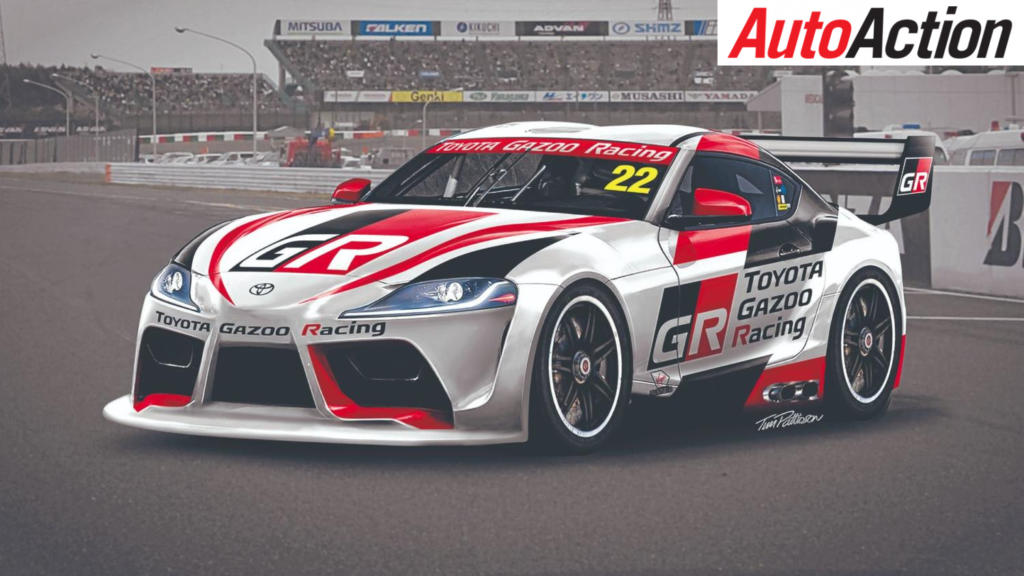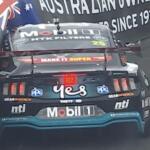SHORT WHEELBASE SUPERCARS NO-GO


Key Gen3 measurement will be fixed, could impact on smaller cars such as Toyota Supra
A proposal to allow the 2022 Gen3 Supercar a variable wheelbase appears unlikely to go ahead.
By BRUCE NEWTON
A chassis with an adjustable wheelbases had been considered by the working group that has the task of developing the Gen3 technical rules as a way to adapt more vehicles to the platform without dramatically impacting on their production car stance and looks.
Primary beneficiaries of such a freedom would be vehicles such as the Toyota Supra, which have a much shorter wheelbase than the likes of the Ford Mustang and Holden Commodore and other larger potential new arrivals like the Chevrolet Camaro.
But according to Auto Action sources, the consensus of opinion within the working group is an adjustable wheelbase would introduce too many technical variables.
The current Supercars Gen2 platform that supports facsimiles of the Holden Commodore ZB and the Ford Mustang has a 2822mm wheelbase. That compares with the standard production wheelbase of 2829mm for the Holden and 2720mm for the Ford.
The Supra by contrast has a much shorter 2470mm wheelbase and the compact two-door two-seat coupe would have to be unnaturally elongated to fit on a longer racing wheelbase.
The decision to stick with a locked longer wheelbase has been made based on the belief the Mustang will continue on racing in a new generation from 2022 and it will go most likely go up against the Chevrolet Camaro or other vehicles of that size.
Supercars has as yet been unable to negotiate homologation approval from General Motors for use of the Camaro. It is understood that process has been complicated by GM’s decision to axe Holden and the slower than expected emergence of its replacement, GM Specialty Vehicles.
All is not lost for teams pondering a post-Holden future though, as AA sources insist smaller vehicles such as the Supra could be massaged to fit onto an elongated wheelbase.
Current Holden factory team Triple Eight Race Engineering has long been associated with a bid to get Toyota into Supercars racing. Its boss Roland Dane sits on the Gen3 working group with DJR Team Penske’s Ryan Story and Supercars’ John Casey and Adrian Burgess.
The potential complexity of trying to achieve parity between Supercars with different wheelbases is a key reason the variable wheelbase was ditched.
Supercars is committed to achieving technical parity across the cars that are homologated for the series, which means they have a level performance baseline when they roll out of the transporter at a meeting.
It’s then up to the teams to extract race-winning pace via set-up strategy and driver talent.
That policy was put under severe pressure by the Holden Commodore ZB and then the Ford Mustang, which set new aerodynamic and centre of gravity benchmarks for the category.
The 2019 season was marred by a series of parity adjustments to the Mustang, the Commodore and the now defunct Nissan Altima.
A fundamental issue with variable wheelbases is vehicles would generate different strengths and weaknesses depending on the circuit.
For instance, a shorter wheelbase Supra would theoretically be faster on slower, tighter circuits such as Winton and the Gold Coast and Newcastle street circuits.
But the longer wheelbase cars would shine at bigger and faster tracks such as Mount Panorama.
In other Gen3 news, AA understands development of the new-generation car has effectively split into two steams. One is focussed on the development of an all-new car, while the other is taking a ‘grandfather’s axe’ approach to see how the current car can be evolved and made cheaper and easier to build and race.
One sources described the latter project as “Gen2.5”.
Another description was “Gen3 is the hamburger with the lot, Gen2 is the hamburger you can afford”.
As reported by AA previously, the goal for the next-gen Supercar is to cut costs from $400,000 to $300,000 per car and also hack into ongoing running costs.
The construction of the new-generation car is not expected to come from a single sources such as T8, as has been mooted this year. Instead, teams will still be able to assemble the chassis and build it up using a basket of control and free parts.
While there has been hope that a slew of updates may make their way into the existing cars for 2021 as an evolutionary step toward 2022, it’s now understood the focus will be on ways to take costs out of cars without making fundamental changes that require significant up-front costs.
So that means major initiatives like a control front upright or a control engine are unlikely to be seen in 2021. However those proposals are very much alive and have every chance of emerging in some form in the future. Another key initiative is to lower the roll hoop of the Supercars chassis to avoid another ‘mutant’ Mustang.
Less sexy ideas like making the front and rear clips of the current chassis bolt-on are more likely to get up in 2021. This is seen as a relatively inexpensive way to make it cheaper and easier to turn crashed cars around and get them back on track more quickly.
For more of the latest Supercars news pick up the current issue of Auto Action. Also make sure you follow us on social media Facebook, Twitter, Instagram or our weekly email newsletter for all the latest motorsports news between issues.






